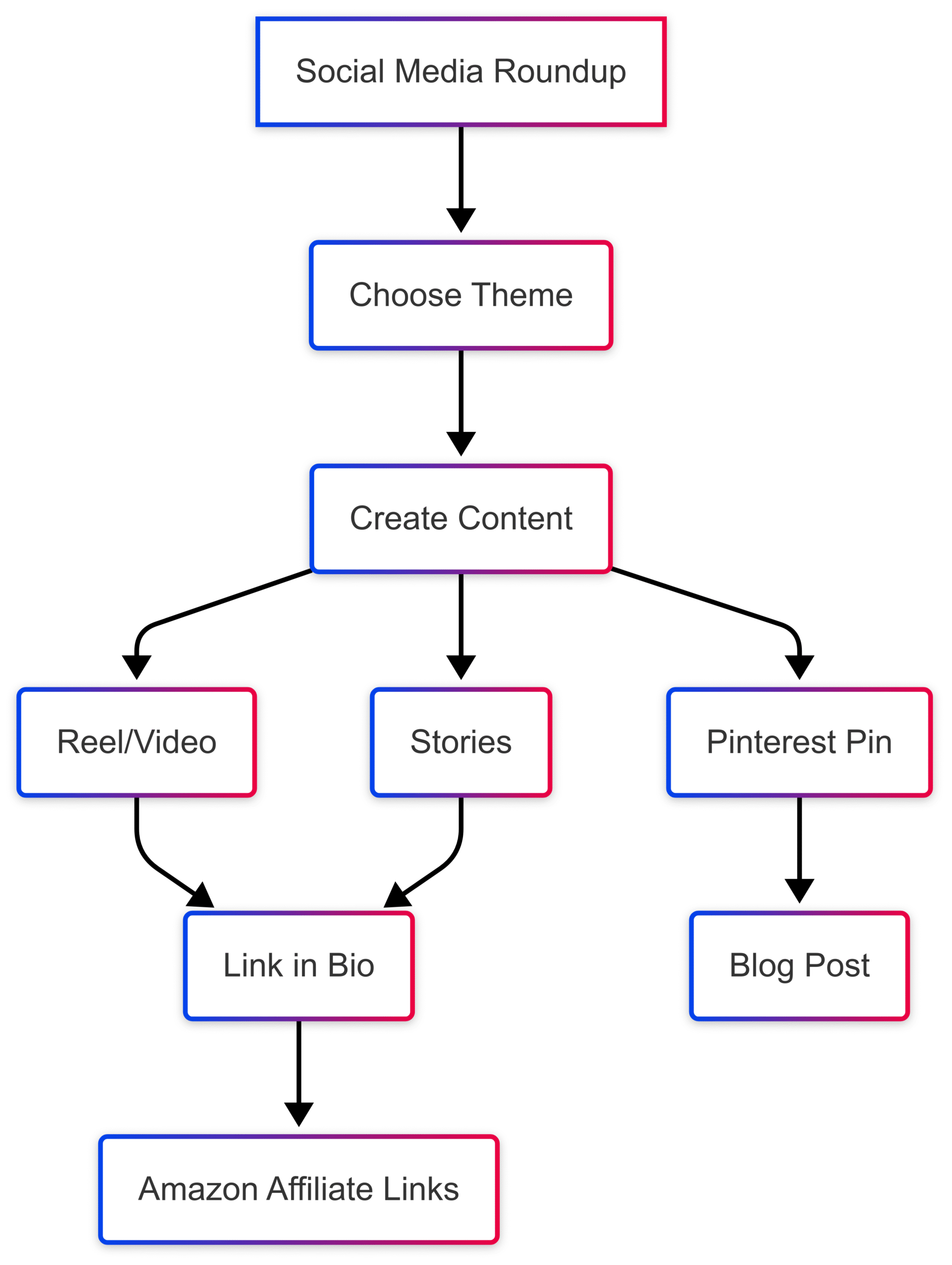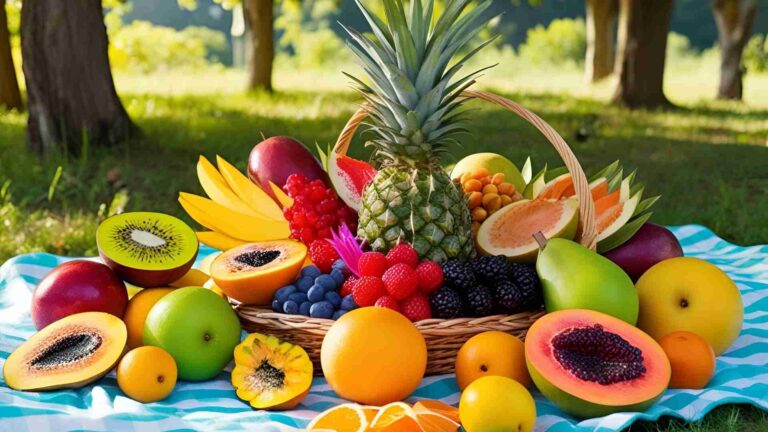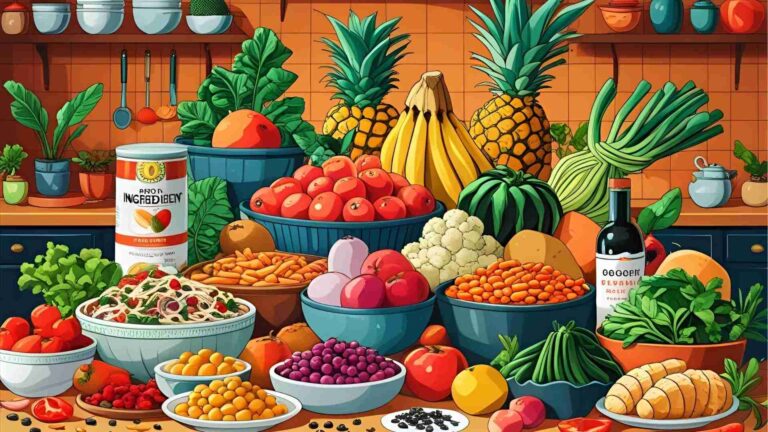5 Ways to Use Amazon Affiliate Links for Food Content Creators
Learn 5 effective ways food content creators can use Amazon Affiliate Links to monetize recipes, gift guides, and more for passive income.
Food content creators—bloggers, YouTubers, Instagrammers, and TikTokers—have a unique opportunity to turn their passion for cooking into a sustainable income stream through affiliate marketing. Among the many affiliate programs available, Amazon Associates stands out as a reliable and accessible option due to its vast product catalog and widespread consumer trust. By strategically integrating Amazon affiliate links into their content, food creators can earn commissions on products their audience purchases, all while providing value through authentic recommendations. This article explores five proven strategies for food content creators to effectively leverage Amazon affiliate links, supported by practical tips, real-world insights, and data to maximize earnings.
Understanding Amazon Affiliate Marketing for Food Creators
Affiliate marketing allows creators to earn a commission by promoting products or services. Amazon Associates, one of the largest affiliate programs, offers commissions ranging from 1% to 10% depending on the product category, with kitchen tools and appliances typically falling in the 3-4% range. The program is particularly appealing for food content creators because Amazon offers a vast array of kitchen gadgets, cookware, ingredients, and food-related products that align seamlessly with culinary content.
The key to success lies in authenticity and relevance. Recommending products you genuinely use and trust builds credibility with your audience, increasing the likelihood of clicks and purchases. Additionally, Amazon’s 24-hour cookie window means you earn a commission on any purchase made within 24 hours of a user clicking your link, even if they buy something unrelated to your recommendation.
Why Amazon Associates?
- Wide Product Range: From immersion blenders to specialty spices, Amazon has nearly every food-related product your audience might need.
- Global Accessibility: Amazon’s OneLink feature automatically redirects users to their local Amazon store, ensuring commissions from international audiences.
- Ease of Use: The Amazon Associates dashboard is user-friendly, providing detailed analytics on clicks, conversions, and earnings.
- Trusted Platform: Amazon’s reputation encourages users to shop confidently, increasing conversion rates.
Strategy 1: Linking Kitchen Tools in Recipe Content
One of the most straightforward ways to incorporate Amazon affiliate links is by embedding them directly into recipe blog posts, videos, or social media content. By linking to the exact tools, cookware, or ingredients used in a recipe, you provide practical value to your audience, making it easier for them to recreate your dishes.
How to Implement
- In Blog Posts: Include affiliate links in the recipe’s “Equipment” or “Notes” section. For example, in a recipe for creamy tomato soup, link to a high-quality immersion blender or a durable stockpot. Write a brief sentence explaining why you recommend the product, such as its ease of use or durability.
- In Videos: Mention the tools you’re using during cooking demos and include affiliate links in the video description. For instance, a YouTube video on baking sourdough could link to a Dutch oven or a digital kitchen scale.
- On Social Media: Share quick tips or hacks using specific tools (e.g., a spiralizer for zucchini noodles) and direct followers to a link in your bio or a blog post with affiliate links.
Tips for Success
- Be Specific: Instead of generic links, choose products with unique features. For example, link to a “Cuisinart 5.5-Quart Stand Mixer” rather than a generic “stand mixer.”
- Disclose Affiliations: Always include a disclosure statement (e.g., “This post contains affiliate links, which means I may earn a commission if you make a purchase”) to comply with FTC guidelines and maintain transparency.
- Optimize for SEO: Use keywords like “best kitchen tools for [recipe type]” or “must-have baking gadgets” to attract organic traffic.
Example Earnings
| Product | Price (USD) | Commission Rate | Commission Earned |
|---|---|---|---|
| Immersion Blender | $49.99 | 4% | $2.00 |
| Dutch Oven | $99.99 | 4% | $4.00 |
| Digital Kitchen Scale | $19.99 | 4% | $0.80 |
Note: A single recipe post with 1,000 clicks and a 5% conversion rate could generate 50 sales. If each sale averages a $2.00 commission, you’d earn $100 from that post alone.
Strategy 2: Creating a “Shop My Favorites” Page
A dedicated “Shop My Favorites” page on your blog or website serves as a centralized hub for your audience to discover your go-to kitchen tools, ingredients, and other food-related products. This evergreen content can drive consistent affiliate revenue by organizing recommendations into categories like baking essentials, pantry staples, or grilling tools.
How to Implement
- Design the Page: Create a visually appealing page with product images, brief descriptions, and affiliate links. Use categories like “Baking Tools,” “Pantry Staples,” or “Healthy Cooking Essentials” to make navigation easy.
- Promote the Page: Link to your “Shop My Favorites” page in your blog’s navigation menu, social media bios, and newsletter footers.
- Update Regularly: Refresh the page with seasonal or trending products, such as holiday baking tools or summer grilling accessories.
Tips for Success
- Curate Thoughtfully: Only include products you’ve used or thoroughly researched to maintain authenticity.
- Use Visuals: Include high-quality images or even short video clips demonstrating the products in action.
- Track Performance: Use Amazon’s analytics to identify top-performing products and prioritize them on the page.
Sample “Shop My Favorites” Structure

Strategy 3: Building “Essentials” Lists for Specific Recipes or Diets
Creating curated “Essentials” lists tailored to specific recipes or dietary preferences is an excellent way to target niche audiences. These lists can be blog posts, dedicated website pages, or even newsletter features that highlight must-have tools or ingredients for specific cuisines or diets.
How to Implement
- Identify Niches: Create lists like “Vegan Baking Essentials,” “Keto Cooking Tools,” or “BBQ Master’s Toolkit.” For example, a vegan baking list might include coconut oil, flaxseed meal, and a high-powered blender.
- Blog or Newsletter: Write a detailed blog post or send a newsletter edition featuring the list with embedded affiliate links. Include a brief explanation of how each product enhances the cooking experience.
- Social Media Teasers: Share snippets of the list on social media to drive traffic to the full list on your blog or Amazon storefront.
Example Essentials List: Vegan Baking
| Product | Price (USD) | Description | Commission (4%) |
|---|---|---|---|
| Coconut Oil | $12.99 | Perfect for replacing butter in vegan recipes | $0.52 |
| High-Powered Blender | $149.99 | Ideal for making nut-based creams and batters | $6.00 |
| Silicone Baking Mats | $19.99 | Reusable, non-stick mats for easy cleanup | $0.80 |
Tips for Success
- Target Specific Audiences: Focus on trending diets like keto, vegan, or gluten-free to attract engaged readers.
- Include Budget and Premium Options: Offer a mix of price points to appeal to a broader audience.
- Leverage Seasonal Trends: Create lists for specific occasions, like “Holiday Baking Essentials” or “Summer BBQ Must-Haves.”
Strategy 4: Sharing Product Roundups on Social Media
Social media platforms like Instagram, TikTok, and Pinterest are powerful tools for showcasing Amazon product roundups. These posts can highlight themed collections, such as “Top 10 Baking Tools” or “Must-Have Pantry Staples,” driving traffic to your affiliate links.
How to Implement
- Instagram Reels/TikTok: Create short, engaging videos showcasing products in action (e.g., using a stand mixer to whip up frosting). Include a call-to-action directing viewers to a link in your bio.
- Pinterest: Design eye-catching pins with product images and link them to a blog post or your Amazon storefront.
- Stories: Use Instagram or Snapchat Stories to share quick product recommendations, linking to a Linktree or similar tool with affiliate links.
Tips for Success
- Engage Visually: Use high-quality images or videos to capture attention. For example, show a knife slicing through vegetables effortlessly.
- Use Hashtags: Include relevant hashtags like #KitchenEssentials or #BakingTools to increase discoverability.
- Track Engagement: Monitor which posts drive the most clicks to refine your strategy.
Sample Social Media Roundup Workflow

Strategy 5: Crafting Gift Guides for Food Lovers
Gift guides are a versatile and evergreen way to use Amazon affiliate links, especially during holidays or special occasions like Mother’s Day or Christmas. By curating themed gift ideas, you help your audience find thoughtful presents while earning commissions.
How to Implement
- Choose a Theme: Create guides like “Gifts for Home Cooks,” “Vegan Gift Ideas,” or “Holiday Baking Kits.” Include a mix of budget-friendly and premium items.
- Blog or Social Media: Publish the guide as a blog post or share it on social media with affiliate links. For example, a “Gifts for Bakers” post might include a rolling pin, a cookbook, and a stand mixer.
- Update Annually: Refresh gift guides yearly to include new products and maintain relevance.
Example Gift Guide: Gifts for Home Cooks
| Product | Price (USD) | Description | Commission (4%) |
|---|---|---|---|
| Chef’s Knife | $59.99 | High-carbon stainless steel for precision cutting | $2.40 |
| Cookbook | $29.99 | Inspiring recipes for all skill levels | $1.20 |
| Cast Iron Skillet | $39.99 | Versatile and durable for everyday cooking | $1.60 |
Tips for Success
- Highlight Unique Products: Include trendy or niche items, like a molecular gastronomy kit, to stand out.
- Personalize Recommendations: Share why you love each product to build trust.
- Promote Seasonally: Share gift guides during peak shopping periods for maximum impact.
Additional Tips for Maximizing Affiliate Earnings
- Leverage Amazon’s Influencer Program: Create a personalized Amazon storefront to showcase your recommendations. This is ideal for creators with a strong social media presence.
- Use Link Management Tools: Tools like Linktree or Bitly help organize and share affiliate links across platforms, especially for social media bios.
- Optimize for International Audiences: Activate Amazon’s OneLink to earn commissions from global markets like Canada, the UK, and Germany.
- Analyze and Adapt: Regularly review Amazon’s analytics to identify high-performing products and adjust your strategy accordingly.
- Diversify Income Streams: Combine Amazon affiliate links with other programs (e.g., ShareASale or Impact) for higher commissions in specific niches.
Real-World Insights: Do Food Creators Make Money with Amazon Affiliates?
Based on discussions from creators on platforms like Reddit, affiliate earnings vary widely depending on audience size, niche, and strategy. Here’s a summary of reported earnings:
| Creator | Subscribers/Followers | Monthly Earnings | Niche |
|---|---|---|---|
| Food-Fly | 138K | $150–200 | Food (unspecified) |
| mrstickball | 350K | $264 (Amazon only) | Product reviews |
| lostinoverstress | 65K | $3,000 | Expensive niche |
| Justapersonmaybe | 15K | $50 | Emulator consoles |
These insights highlight that even creators with smaller audiences (e.g., 2K–30K followers) can earn $20–$300 monthly with minimal effort, while those in product-focused niches or with larger audiences can earn significantly more.
Challenges and Considerations
- Low Commission Rates: Amazon’s commissions (1–10%) are lower than some programs like ShareASale or ClickBank, so volume is key.
- Cookie Window: The 24-hour cookie window means you only earn commissions on purchases made shortly after a click.
- Program Requirements: New affiliates must make three sales within 180 days to remain in the program.
- Audience Trust: Over-promoting products can erode trust, so focus on authentic recommendations.
Conclusion
Amazon affiliate links offer food content creators a powerful way to monetize their passion for cooking. By strategically linking kitchen tools in recipes, creating curated “Shop My Favorites” pages, building essentials lists, sharing social media roundups, and crafting gift guides, creators can generate passive income while providing value to their audience. Success requires authenticity, strategic placement, and consistent promotion. Whether you’re a small creator earning $20 a month or a larger one generating thousands, Amazon Associates is a low-effort, high-potential revenue stream worth exploring.
Start by signing up for Amazon Associates, experimenting with these strategies, and tracking your performance. With time and refinement, your affiliate links can become a meaningful part of your income as a food content creator.
Please share these 5 Ways to Use Amazon Affiliate Links for Food Content Creators with your friends and do a comment below about your feedback.
We will meet you on next article.
Until you can read, 5 Ways to Make Money on Instagram as a Food Creator






